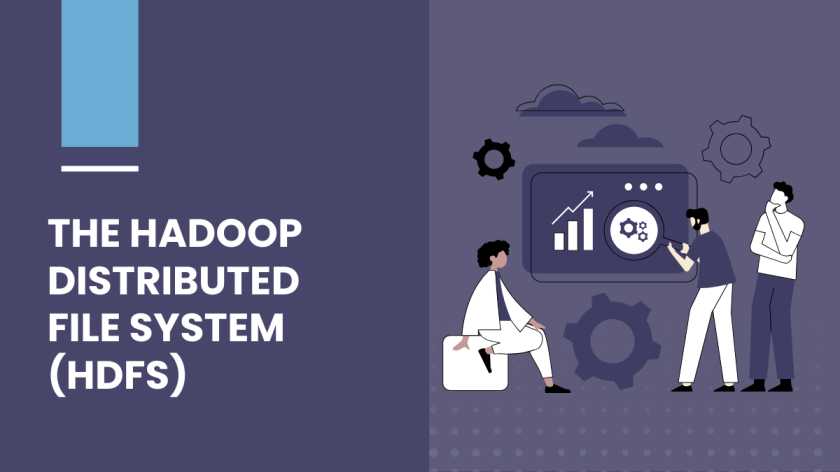Hadoop Distributed File System (HDFS) is the primary data storage system used by all Hadoop applications. This is an open-source, structured application. HDFS works by facilitating quick data flow between multiple nodes. It is an extremely useful framework, and companies that deal with a huge data pool frequently employ HDFS daily.
HDFS has grown to become an essential part of the Hadoop system as it supports big data and provides a way to manage large data sets. Companies are using HDFS globally as a means to store data since it offers a high degree of credibility and security.
Read on to learn the fundamentals of the Hadoop Distributed File System and its importance in building a career in data science.
What is Hadoop Distributed File System (HDFS)?
HDFS stands for Hadoop Distributed File System, and as the name suggests, it functions as a distributed file system for most of the commodity hardware. It is designed in a way that helps companies store and manage large amounts of data conveniently. HDFS is exclusively the file system of Hadoop, which offers access to data stored in the Hadoop system, making it a subset of Hadoop.
HDFS is built and developed to run on cost-effective standard hardware. It is a robust, resilient and dependable application that easily offers streaming access to data files in Hadoop Apache.
It offers easy access to data applications to the intended users, making it appropriate when dealing with big data sets. One can enroll in a data analyst course to better understand the foundation of and how it benefits businesses.
Features of Hadoop Distributed File System
HDFS is a very useful tool for global companies, but what makes it so useful can be understood with the help of its unique features that are enumerated below:
- Data replication: This feature helps protect against data loss and ensures the availability and accessibility of data. For instance, replicated data can be retrieved from another location in a cluster in case of a mishap of node breakdown, hardware breakdown, problem in a specific application, etc.
- Reliability and fault tolerance: As HDFS can replicate data and store a cluster of the same in a variety of locations, it is a highly reliable and fault-tolerant tool. One can easily retrieve and access data from a duplicate location even if the original storage has become faulty.
- Scalability: A cluster can expand to hundreds of nodes to match escalating requirements. HDFS possesses the ability to store and keep data across multiple cluster nodes.
- High availability: HDFS offers very high data availability as it can access and retrieve data from the NameNode in circumstances where the DataNode fails to perform its prescribed functions.
- High throughput: With the help of the distributed data storage model of HDFS, data can concurrently be processed on a collection of nodes. This feature allows rapid processing and ultimately reduces processing time.
- Data locality: Instead of letting the data relocate to the location of the operational unit, HDFS allows computing and processing of the data on the DataNodes, which is the primary storage location of the data. It reduces the travel span between computation and data, which results in the reduction of network congestion. It also enhances system throughput with the help of this method.
Advantages of Hadoop Distributed File System
Hadoop Distributed File System is an advantageous proposition for most companies. One can gain a deeper insight into the benefits of HDFS with the help of effective online and offline data analytics courses.
The following are the major benefits offered by HDFS:
- Inexpensive tool: Cost-effectiveness of HDFS is one of its major benefits, as it uses affordable commodity hardware for storing and processing data in the DataNodes. Additionally, there is no licensing fee for using HDFS as it is an open-source platform.
- Conveniently stores large data sets: HDFS can store dynamic and several data sets that vary in type and size. The data can exist in any form, be it structured or unstructured data, and in any size, for example, ranging from megabytes to petabytes, HDFS can store and process all of it.
- Quick recovery following hardware crash: HDFS is designed and developed in a way that can detect any sort of failure or issues and recover easily, with little to no assistance. If there is a problem in the hardware, HDFS can detect and fix it with its built-in approach.
- Portability and compatibility: HDFS offers portability across numerous hardware platforms. Also, it offers a high degree of compatibility with various operating systems such as Linux, Windows, Mac OS and so on.
- Streaming data access: Designed for batch processing, HDFS is specifically used for high data throughput, making it appropriate for streaming access to datasets.
HDFS Use Cases
Primarily, HDFS was used for ad serving and search engine propositions, but now it has found its uses beyond this scope. Large-scale companies now use it for image conversion, log storage, log processing, machine learning and odds analysis.
Companies in various sectors frequently use HDFS to effectively work with large data sets. Some of them are stated as follows:
- Electric companies: The power and electric industry, including the electricity companies, use HDFS to monitor and analyse the well-being of smart grids.
- Marketing campaigns: HDFS helps in marketing by providing information about the target audience. For example, their purchase history, based on preferences, etc.
- Oil and gas providers: The oil industry generally deals with various data types. HDFS framework provides a data cluster where the dynamic data types, such as video, audio, image, etc, can be stored and processed.
- Research activities: Collecting and analysing data is integral to conducting research activities. Here, HDFS helps to store and analyse the intended data.
Conclusion
HDFS is a crucial storage mechanism for Hadoop applications that offers data redundancy and allows the Hadoop cluster to be divided into smaller chunks. It is one of the fastest-growing technologies in today’s world and a crucial aspect of data science. It is a lucrative career option for data science professionals where one can learn the fundamentals and mechanism of HDFS with the help of a useful data analyst course.
Learn more about Hadoop and HDFS with the Postgraduate Programme In Data Science And Analytics by Imarticus Learning. This data science course not only teaches the fundamentals of the Hadoop Distributed File System but also its practical applicability. Visit the website to explore more course-related details.


